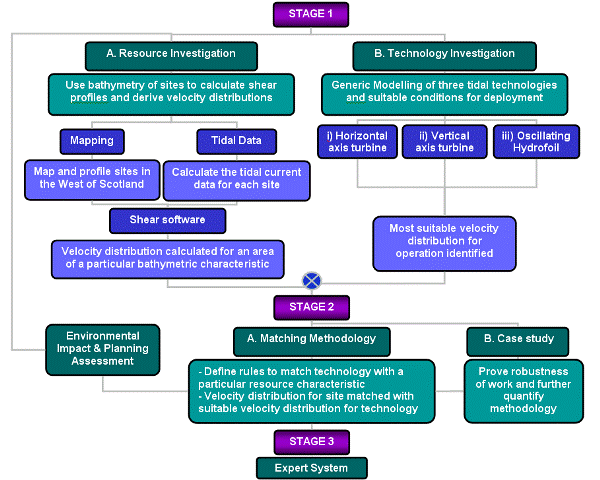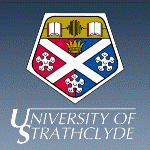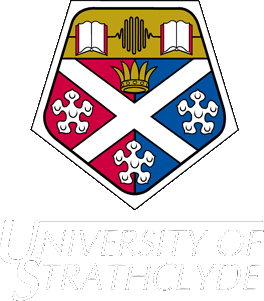|
Marine Currents |
Aim
Investigate the characteristics of the tidal resources in Scotland and demonstrate how to match those resources with the appropriate Marine current technology
Description
To identify how the bathymetry of particular sites affects the tidal current flow characteristics and produce velocity distributions for a number of west coast sites. To model the three main tidal technologies: horizontal axis, vertical axis and oscillating hydrofoil devices, in order to provide a generic review of each technology type. Then to combine the resource and technology information to produce a frame work to assess the suitability of a particular technology for a resource characteristic. The final aim is to complete a case study to demonstrate the implementation of this methodology for at least one Scottish West Coast site to prove robustness of work and further qualify methodology.
back to topPlan
Stage 1 - Investigation
A. Resource Investigation
- Identify current weaknesses in available resource data
- Obtain ocean topography charts
- Select sites in the west of Scotland based on current research, specific criteria, and surface velocity
- Calculate shear profiles according to bathymetry of selected sites
- Correlate shear data with surface velocity to derive velocity distributions
B. Technology assessment
- Generic Modelling of three tidal technologies: horizontal axis, vertical axis and oscillating hydrofoil devices
- Oceanographic & Hydrodynamic Suitability of each type
- Potential packing densities
- Define suitable conditions for each technology in terms of depth, velocity, surface roughness etc
Stage 2
A. Analysis Methodology
- Develop a frame work to assess each technology suitability for each resource characteristic
- Define rules to match technology with particular resource characteristic
B. Case study
- Demonstrate the implementation of this methodology for at least one Scottish West Coast site, most likely the 'Sound of Islay'
- Prove robustness of work and further quantify methodology
Flowchart
Proposed Deliverables
- The bathymetry profiles and velocity distributions for a number of west coast sites
- A generic review of the three main technology types
- A frame work to assess the suitability of a particular technology a resource characteristic
- A case study to demonstrate the implementation of this methodology for at least one Scottish West Coast site, most likely the ‘Sound of Islay’
Timetable
- Week 1 (23/1-29/1) - Project Definition, Literature review
- Week 2 (30/1-05/2) - Project aims, scope, deliverables and plan defined, Literature review, 1st Presentation
- Week 3 (06/2-12/2) - Mapping and identification of sites in the west of Scotland, Literature review
- Week 4 (13/2-19/2) - Mapping profiles, Velocity distribution software developed, Tidal Data, 2nd Presentation
- Week 5 (20/2-26/2) - Velocity distribution software and tidal data
- Week 6 (27/2-05/3) - Technology investigations, 3rd Presentation
- Week 7 (06/3-12/3) - Technology investigations
- Week 8 (13/3-19/3) - Environmental issues, Packing densities, 4th Presentation
- Week 9 (20/3-26/3) - Methodology defined, Resource and technology information combined
- Week 10 (27/3-02/3) - Methodology 5th Presentation
- Week 11 (03/4-09/4) - Economic issues
- Week 12 (10/4-16/4) - Methodology and Case Study
- Week 13 (17/4-23/4) - Refining and Changes implemented
- Week 14 (24/4-30/4) - Final Presentation
|
Marine Currents |
Go back to Contents

 Home
Home 
